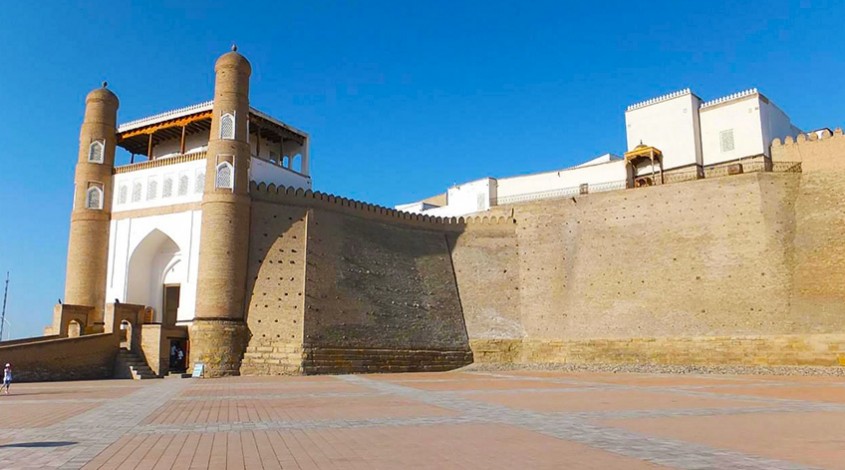

In 1922, two years after the establishment of Soviet rule on the territory of Turkestan, the State Architectural Art Museum was founded in Bukhara. Previously, its exhibits were located in a separate building, but in 1945, it found its new home on the territory of the Ark Fortress. Exactly 40 years later, the museum was granted a new status — it became a museum-reserve. Today the museum has 6 branches and 18 thematic exhibitions. The museum constantly refills its display.
The exposition of the museum located on the territory of the Ark Citadel includes manuscripts, coins and natural treasures of Bukhara. Today, the summer residence of the emirs of Bukhara, located in the Sitorai Mokhi Khosa Palace, houses a branch of the State Architectural Art Museum. Here travelers will find examples of applied arts and crafts, dishes and household items of the nobles of Bukhara. If you want to learn more about the life, work and leisure of Bokharans who lived later, in the end of the 19th century and in the beginning of the 20th century, visit the Fayzulla Khodjaev Memorial Museum.
Literary exhibits can be found in the Kukeldash Madrassah; it possesses a rich collection of works by Ayni, J. Ikromi and other writers of those times. Works of modern craftsmen of Bukhara are exhibited on the territory of the Nadir Divan-begi. In addition, you can also stay there while they work and watch how another masterpiece of chased painting on dishes is being created. You can also purchase these items in the museum.


Carpets, a source of pride for the East, are shown in the Magoki-Attori Mosque. Works of masters living in different times of the period from the 18th to the 20th century are collected here. Unique items strike the imagination because the culture of weavers of Kazakhstan, Iran, Armenia, Turkmenistan and Uzbekistan is represented here. All carpets are unique despite the similar oriental style of the craftsmen. Different fibers, patterns, paints that were used make it possible for us to discover the peculiarities of works created by masters.
The Chashma-Ayub Mausoleum located in the old part of Bukhara keeps within its walls the history of water supply of the city. The complete history of water supply in the region is shown in the exhibition of the branch and tells us what obstacles had to be overcome to get and preserve water and how people dealt with it. Leather bags used to carry water, copper tanks and ceramic water pipes are the part of the historical heritage of Bukhara.
The Ibrahim Ohund Madrassah will shed light on the history of Varakhsha city, one of the richest cities of the period from the 16th to the 14th century. The ancient settlement Paikend is located 50 kilometers from Bukhara. A branch of the Bukhara Museum that tells the story of this ancient city is also located here. The attraction known to the entire world as the birthplace of Avicenna, the village of Afshona, preserves the story of the life of the great scientist. In 1980, the Museum of Abu Ali Ibn Sino was established there.


Zindan, the former 18th century prison, became a citadel for legal proceedings in the 19th and the 20th centuries. That part of history is also preserved in the museum. Not far from the Chashma-Ayub, there is a modern building of the Museum dedicated to the story of Imam al-Bukhari. In the Abdulaziz Khan Madrassah, you can get acquainted with the works of craftsmen of the past. There is another part of the Museum located in the Ulugbek Madrassah, which tells about the history of restoration of the city’s architectural monuments. For the most part, it covers the period that started in the 1920s. You can get acquainted with the history of blacksmithing in the Kulut Caravanserai Museum where you can even try it for yourself under the guidance of local blacksmiths.
All the branches of the Museum of History help not only tourists, but also historians to examine the specific features of daily routine and the life of people living in different periods of time. Each branch is located in the immediate proximity to the landmarks related to its specialization profile. It helps to immerse oneself deeper in that era and get as much information as possible. However, to get a complete picture, you have to spend an entire day in the Local History Museum of Bukhara.
Nonetheless, the team of Canaan Travel strongly recommends that you take the time for this excursion. What you will discover in Bukhara is worth any amount of time.
